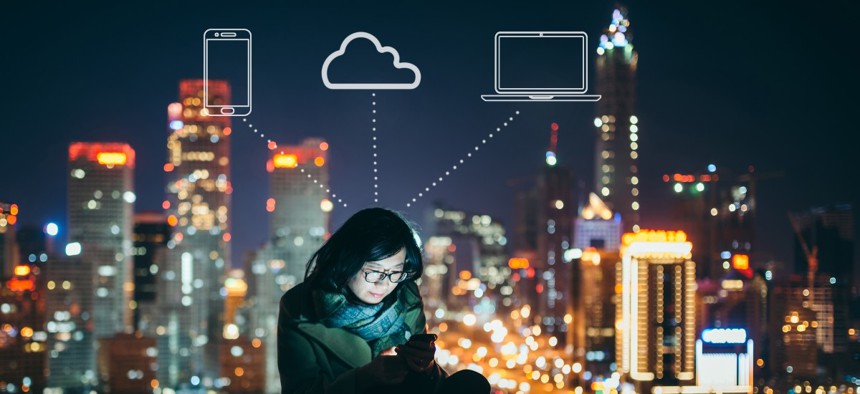Channel of Choice: The End Goal for CX in Government

AerialPerspective Images/Getty Images
The federal government has to offer options that serve everyone while also improving customer experience.
The phrase “channel of choice” has been around a while, but it’s taken on a new meaning in recent years as the number of channels continues to increase. In short, the phrase means that customers want to, and often insist on their ability to, choose their preferred channel—telephone, website, mobile app or social media—to contact a company.
Originating from the private sector, the concept exploded as use of mobile devices and social media dramatically expanded options for consumer interaction.
While corporate America rapidly prioritized response to this shift—in a competitive effort to reach as many customers as possible—federal government agencies faced a different scenario. Agencies must prioritize continuity of mission while dealing with changing political landscapes and new initiatives. Additionally, many agencies recognize that they will need to focus on upgrading and implementing new technologies to even consider offering a “channel of choice” approach.
Accessibility and consistency are crucial to government outreach. Unlike an online retailer that can limit choice, because its customers have self-selected the web alternative, the government must offer alternatives to serve everyone and ensure that all those alternatives provide the same message every time.
Citizen diversity and variations in need mean there is no typical user. Someone seeking assistance from the Federal Emergency Management Agency and someone with questions about student loans for the Department of Education will have different ways of obtaining information, and the government must be prepared for every possibility.
That’s why creating the “channel of choice” is so important for federal agencies: because it allows them to set up a system that works for everybody. Regardless of circumstances, agencies can provide the information in a way that suits everyone, also known as providing a good customer experience. It’s a mindset and process that requires intention and focus.
To plan for a channel of choice delivery system, an agency needs to know all possible options and what needs to be prioritized. For example, during creation of the vaccine hotline for the Centers for Disease Control and Prevention, team members identified households with low or no access to the internet that struggled to find information about vaccines; to address this need, the contact center updated its technology. By starting with a process of discovery, audience research and technology evaluation, the agency achieved a program that accommodated more than five million requests in 2021 and is on track for similar numbers in 2022.
Implementing a channel of choice strategy also requires effort to reinforce to users that their options will continue to be improved with emerging technologies.
For example, use of an intelligent virtual assistant stands out in sharp contrast to the older, interactive voice response systems, with long menus and multiple options. IVA offers conversational support and gets users what they need with prompts and automation. It also presents better data for agencies to understand what callers are seeking and how quickly their questions were answered or their problems were solved.
The year 2022 may well become known as the time that agencies achieved many milestones in establishing “channel of choice” environments. For citizens needing government services, this is welcome news.
Evan Davis is the senior vice president for federal civilian agencies at Maximus.





